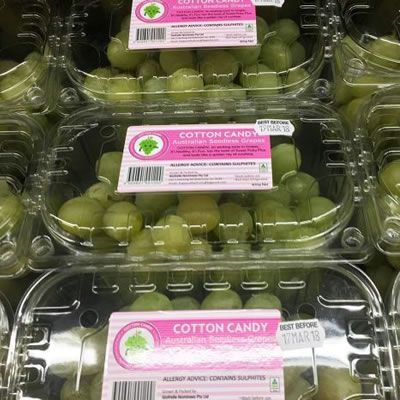
How are cotton candy grapes made?
September 11, 2019 | www.mic.com | By: Melissa Pandika
Biting into Cotton Candy grapes feels like having a crush on a cartoon character as a kid — a little weird, but somehow, right.
Biting into Cotton Candy grapes feels like having a crush on a cartoon character as a kid — a little weird, but somehow, right. They somehow embody spun sugar, but in the form of plump, juicy morsels. I fell hard and fast for them. When I brought some home from Trader Joe’s last night, I couldn’t stop popping them into my mouth (despite definitely being full on tacos). In fact, I’m noshing on frozen Cotton Candy grapes as of this writing. (Frozen, they taste a bit like strawberry sherbet.) Major grocery stores, like Trader Joe’s, Sam’s Club, and Publix, carry them, typically from around August to October, so if you haven’t tried them yet, do yourself a favor.
What wizardry could imbue the humble grape with such a whimsical flavor? To find out, I asked the wizard himself, David Cain, co-founder of International Fruit Genetics (IFG) in Bakersfield, California, who led the team that developed the Cotton Candy grape. He tells me his team didn’t even set out to create a grape reminiscent of the county fair confection. And the scary delicious flavor doesn’t even come from genetic engineering or artificial flavoring, as I first suspected. Cotton Candy was just the serendipitous result of breeding East and West Coast grape species using traditional methods.






